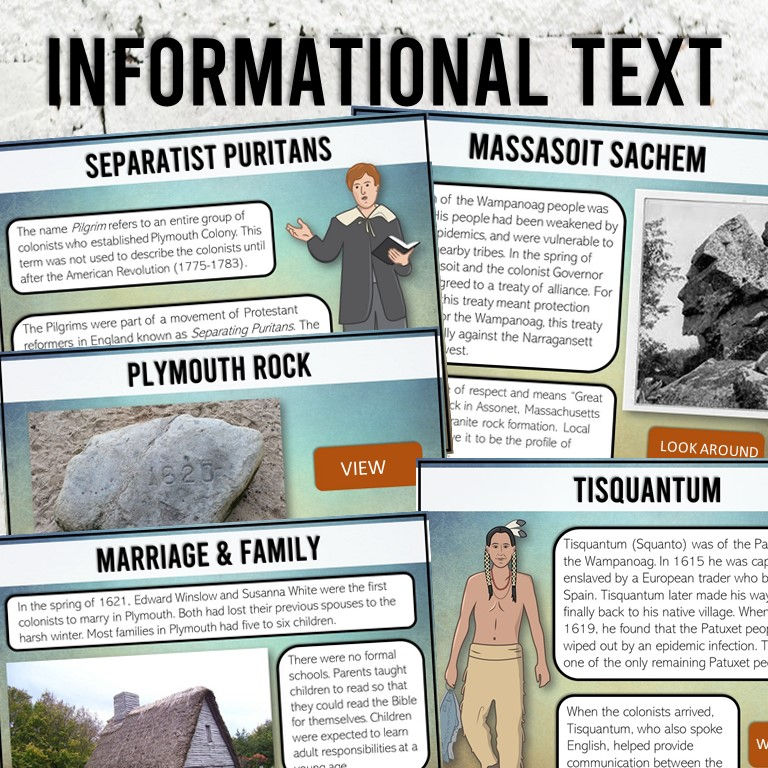How To Teach Thanksgiving And Plymouth Colony Accurately
- Michelle McDonald

- Nov 4
- 3 min read
As we approach the season of giving-thanks and reflect on the story of Thanksgiving and Plymouth Colony, it’s vital that educators take time to teach this chapter of American history with accuracy, nuance, and respect. The popular narrative of Pilgrims and Native Americans sharing a meal and being friends, while appealing, often leaves out deeper truths, multiple voices, and the complexity of what truly happened.
Here is how you can use a virtual field trip to teach Thanksgiving and Plymouth Colony accurately, and why direction & perspective matter so much.
Teaching history isn’t just about putting facts on paper. It's about helping students understand the past as it really was, not as we wish it to have been. Good historians don’t just settle for one perspective on a historical issue. They piece together many versions of a story.
When we teach only one viewpoint, for example, the colonial/European colonist perspective, we risk marginalizing or erasing the voices of Indigenous peoples, women, children, and others who are an important part of the story. Multiple perspectives help learners build empathy, critical thinking, and a more realistic understanding of how and why history unfolded.
In the case of Thanksgiving and Plymouth Colony, the reality is layered: Indigenous lands and peoples, colonial motivations, survival and hardship, cultural exchange, conflict, mourning and memory. A resource that takes multiple perspectives helps get beyond the Pilgrims = heroes, Native Americans = helpers caricature.
In short, teaching Thanksgiving and Plymouth Colony accurately is not just about “getting the facts right.” It’s about modeling how to think historically, respect voices, confront complexity, and foster a classroom where the full story can be explored.
I've designed an Early America virtual field trip to Plymouth Colony. While you could use this during November, leading up to Thanksgiving, it could be used at any point if you are teaching the 13 Colonies.
This virtual field trip uses Google Earth™ 360-degree views, video, informational text and visuals so students can virtually visit key sites: a wigwam reconstruction, the Mayflower ship reconstruction, Plymouth Rock, and a colonial village site. There are historical thinking questions integrated throughout the activity to keep your students focused and accountable.
This activity explicitly covers Indigenous peoples and gives recognition to Native lands. You'll find a video linked about the Wampanoag way of life and a 360-degree Google Earth view of a wigwam home reconstruction. Students will learn about Samoset and Tisquantum's (Squanto) role in communicating with colonists. They will also use Google Earth 360-degree views to better understand Profile Rock in Massachusetts, which is believed to be the profile of Massasoit, the sachem of the Wampanoag people. This activity also touches on Thanksgiving Mourning, which is often overlooked.
It can be hard for students to understand what life was like for colonists in the 1600's, or the push and pull factors that caused people to set sail for North America. This activity includes Google Earth links to tour a replica of the Mayflower ship. They can see where passengers ate, slept, or walked along the deck.
To better understand colonial life, this virtual field trip includes Google Earth 360-degree views of a reconstructed Plymouth colony. They can step back in time and tour the inside of a reconstructed colonial home.
This virtual field trip also covers how the colony grew, what life was like for women and children, and how the wealth and status of Plymouth colony mirrored that of England, where a small number of people controlled the best land and held much of the wealth.
This virtual field trip is ready in Google Slides, with all of the content and built-in links ready to go. It also includes editable questions and a grading rubric (so you can tailor it to your students’ needs).
This activity is aligned with Common Core and state social studies standards.
All of this means that the lesson is not only engaging (virtual tour, visuals) but also strong on academic substance (text + multiple voices + analysis questions). That combination is exactly what you want when teaching Thanksgiving and Plymouth Colony accurately.
You can grab this ready-to-go activity here: Plymouth Colony Virtual Field Trip

Check out some of my other virtual field trips for teaching U.S. History









Comments